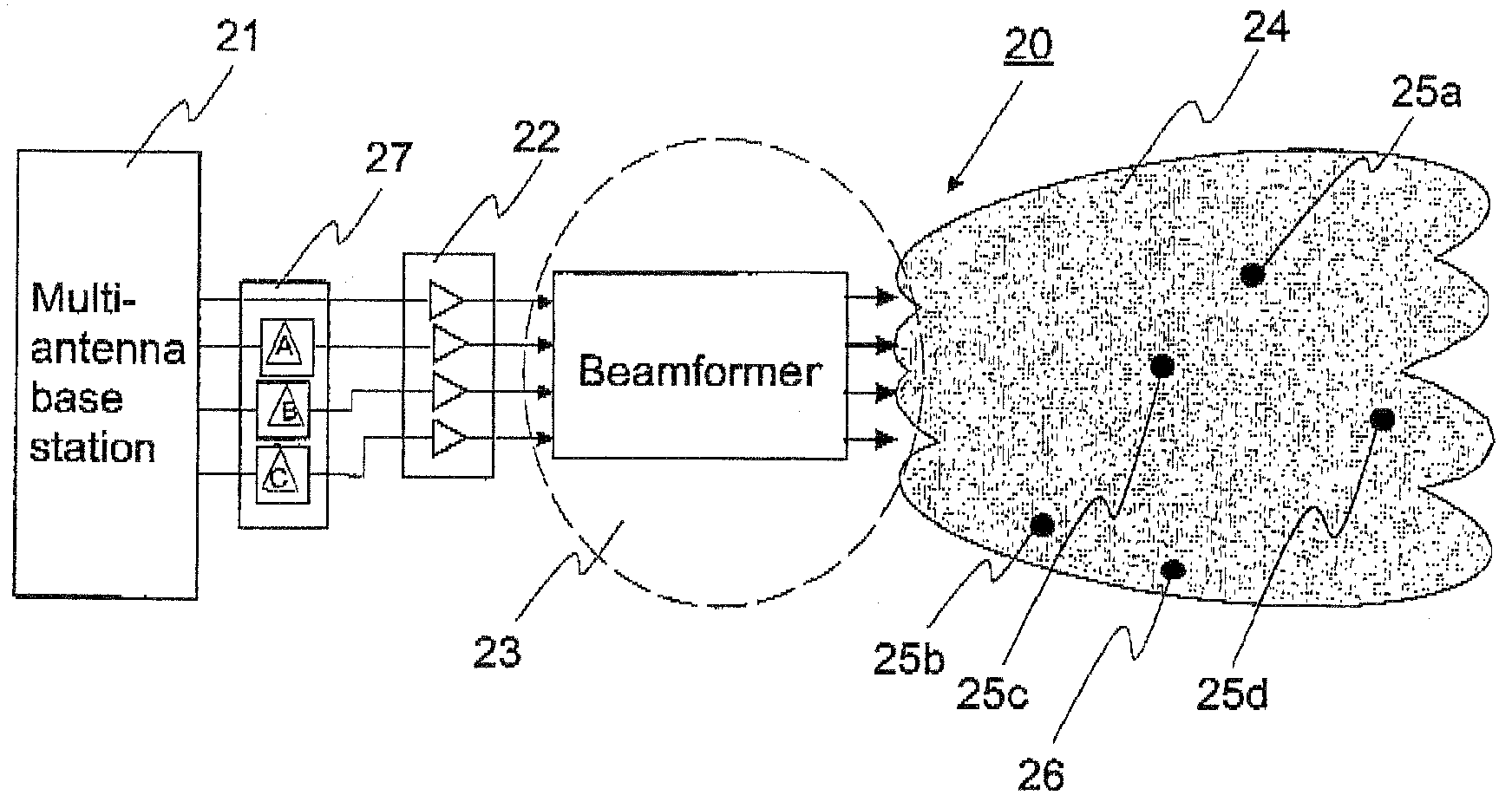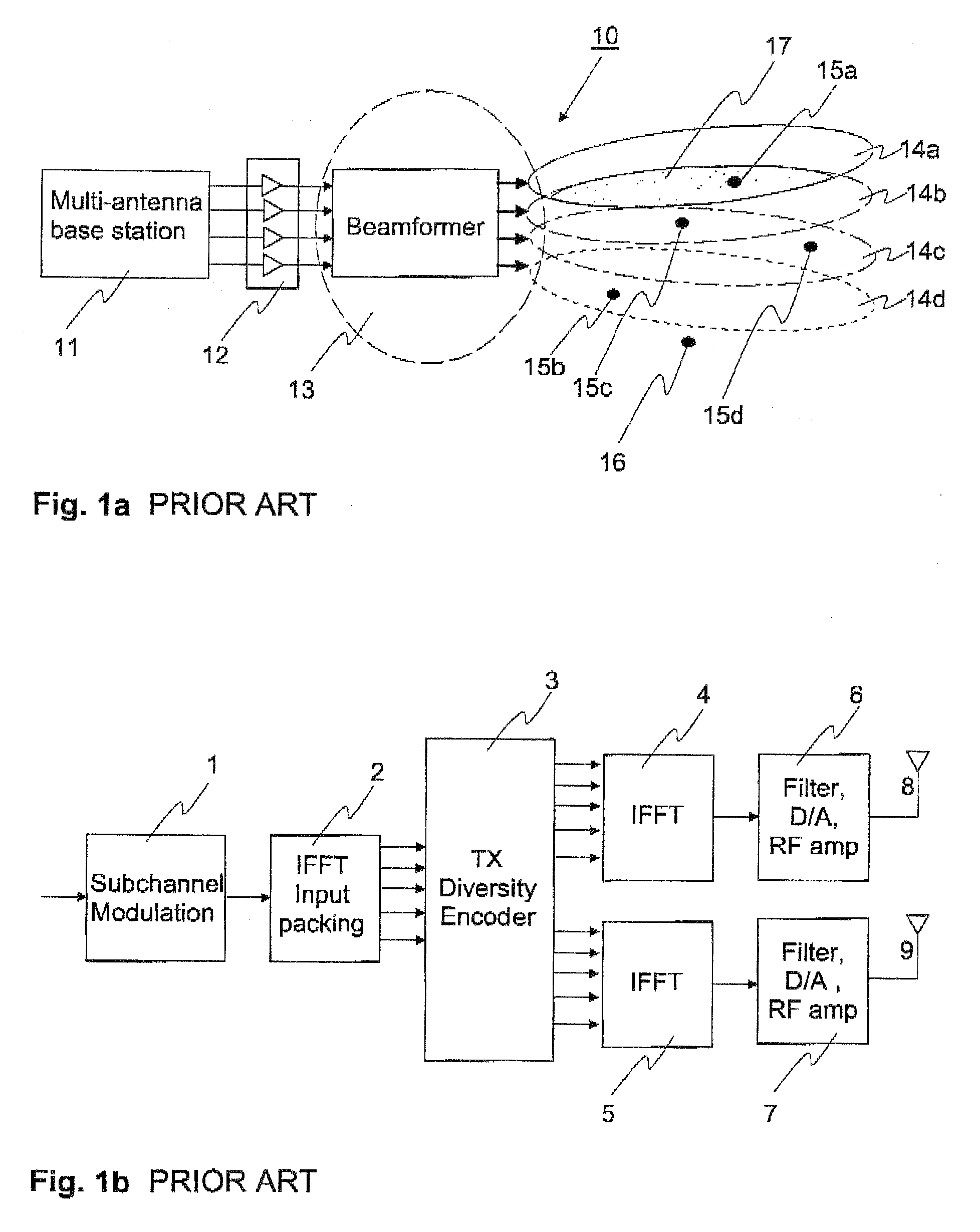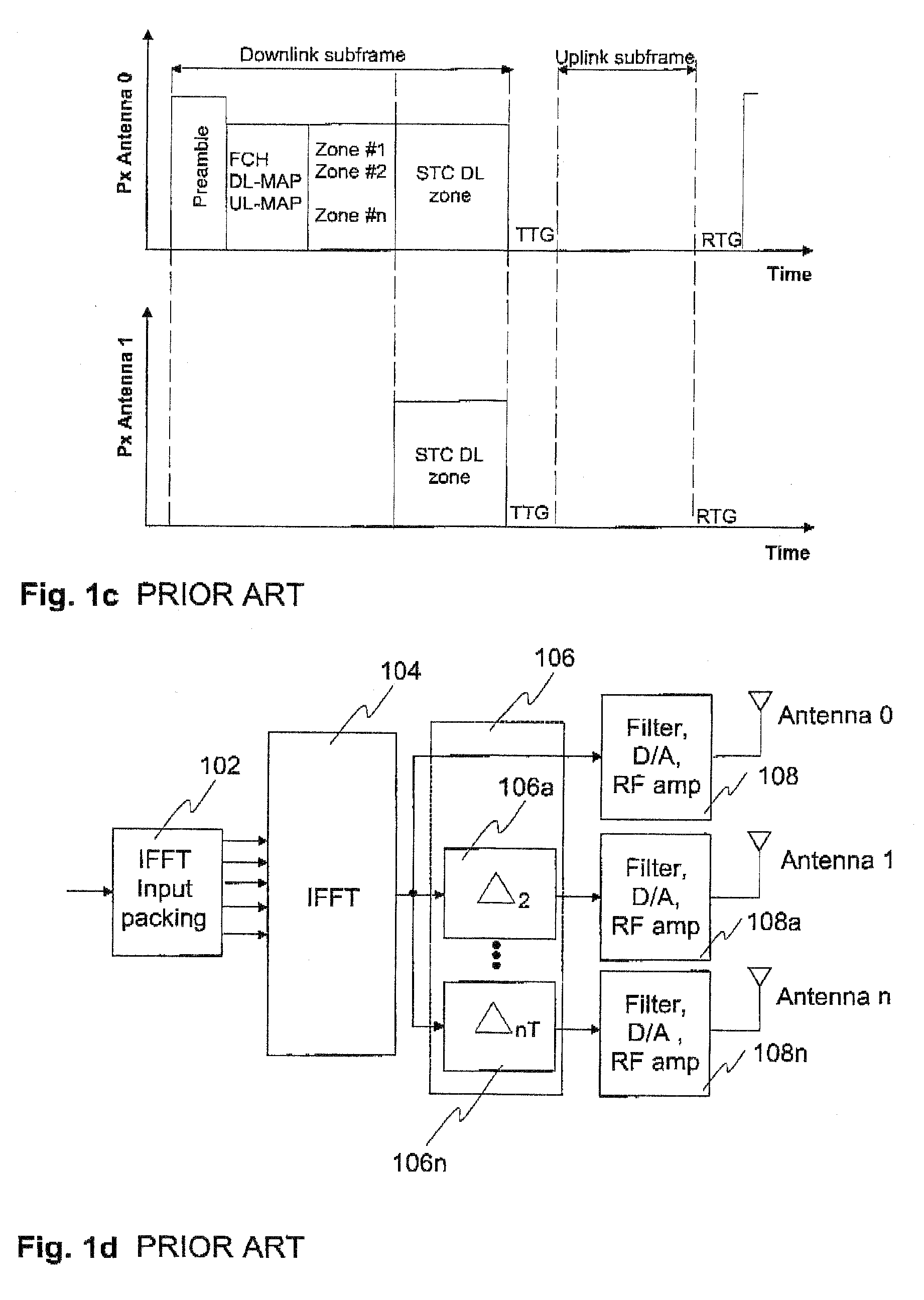Transmission method for common channels
a common channel and transmission method technology, applied in the field of common channel transmission method, can solve the problems of unreachable common channel coverage, destructive addition, and dead zone development, and achieve the effect of reducing transmitter power, simple mobile station receiver structure, and simple and practical implementation
- Summary
- Abstract
- Description
- Claims
- Application Information
AI Technical Summary
Benefits of technology
Problems solved by technology
Method used
Image
Examples
Embodiment Construction
[0050]FIGS. 1a-1d were explained above in connection with the description of the prior art.
[0051]The basic idea of the cyclic delay diversity is in the property of the discrete Fourier transform. A cyclic delay performed in the time domain corresponds to a linear phase shift in the frequency domain. In OFDMA terms, performing a cyclic delay of x samples after IFFT creates a linear phase rotation in subcarrier dimension. That is, a phase shift of the k:th subcarrier is:
dcy,kk =2π×k / Nfft (1).
[0052]For example if (a0, a1, a2, a3) is a stream of four samples (Nfft=4) of one OFDMA symbol without the cyclic delay then a cyclic delay operation with a delay of two samples transforms the original stream to a delayed stream:
(a0,a1,a2,a3) / (a2, a3, a0, a1) (2)
[0053]Thus two samples from the end of the original symbol have been moved to the beginning of the delayed symbol. As the cyclic delay operation is done before the cyclic prefix it preserves the ISI protection (Inter Symbol Interferenc...
PUM
 Login to View More
Login to View More Abstract
Description
Claims
Application Information
 Login to View More
Login to View More - R&D
- Intellectual Property
- Life Sciences
- Materials
- Tech Scout
- Unparalleled Data Quality
- Higher Quality Content
- 60% Fewer Hallucinations
Browse by: Latest US Patents, China's latest patents, Technical Efficacy Thesaurus, Application Domain, Technology Topic, Popular Technical Reports.
© 2025 PatSnap. All rights reserved.Legal|Privacy policy|Modern Slavery Act Transparency Statement|Sitemap|About US| Contact US: help@patsnap.com



